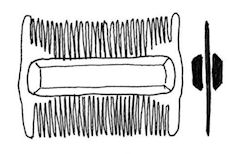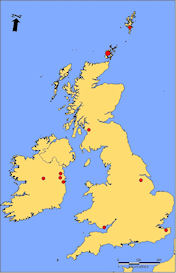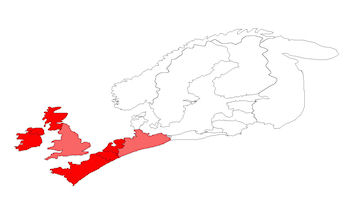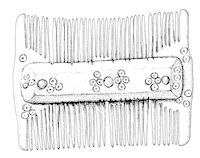
|  |
 |
 [Legend] |
 |

|  |
 |
 [Legend] |
 |
Type 11 comprises well-finished, double-sided composite combs that are short in relation to their length (typically in the ratio of less than 2.5:1). They feature straight ends and connecting plates of either plano-convex or bevelled cross-section, are fixed with iron rivets, and feature decoration that is organised into discrete panels, or parallel horizontal lines of motifs. Their teeth are graduated (i.e. decreasing in length towards the ends), but usually undifferentiated (i.e. the same gauge on each edge). The type appears to date to the period between the 5th and 8th centuries, though in many cases stratigraphy is insecure. Variants of the type are known in Scotland and Ireland, and in western continental Europe. The type is discussed in more detail (with particular attention to the Scottish material) in Ashby 2009.
The comments facility has now been turned off.
© Internet Archaeology/Author(s)
University of York legal statements | Terms and Conditions
| File last updated: Tue Sep 20 2011